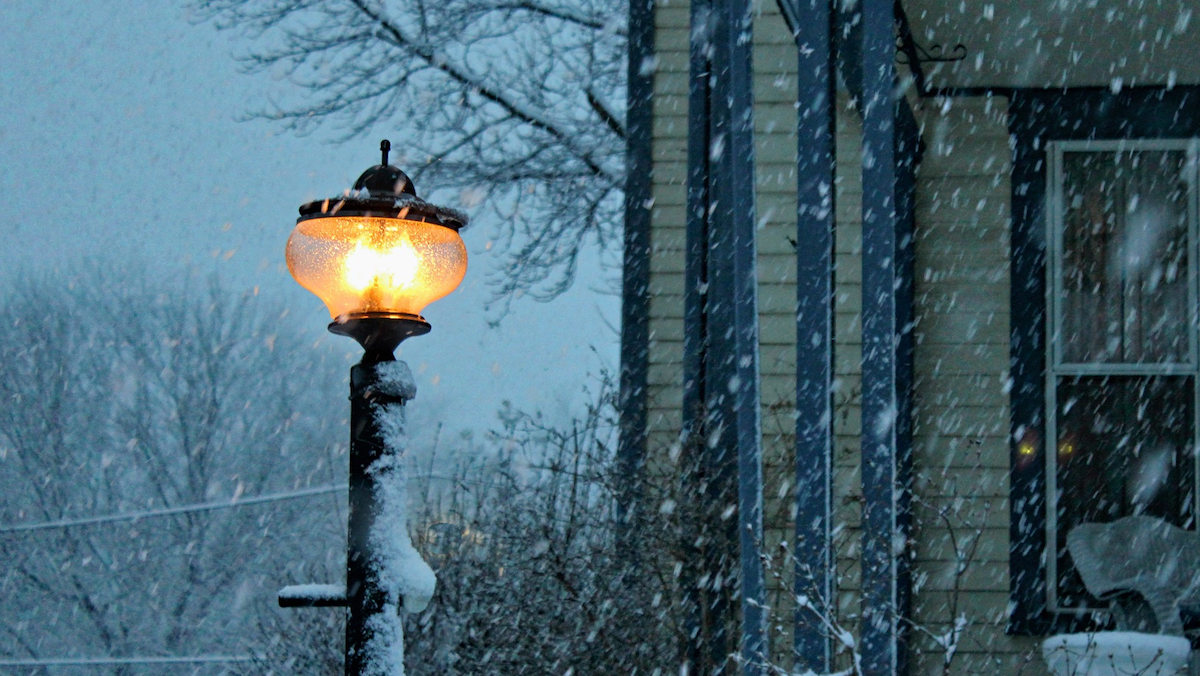First, it was the Petoskey stone that drew my wife into her hobby of Michigan geology. There was less excitement with the Charlevoix Stone but then came her search for the Frankfort Green and Leland Blue slag stones. This season, her focus on Michigan geology has moved on to “yooperlites” and Lake Superior agates.
Discovered only a few years ago, “yooperlites” are mostly “syenite” rock. Similar to granite, these rocks are typically gray stones that blend in with the other stones found along the shores of Lake Superior. However, because they also contain fluorescent sodalite, these stones will glow with orange or yellow color under ultraviolet light. Hence their unique attraction.
When my wife first told me of this geological discovery, my thought was more of “why would anyone walk along the shore with a UV light at night in the first place?” Once again, I was reminded that I should have paid more attention and put more effort into my inorganic chemistry class at St. Xavier.
Technically, these rocks are “syenite clasts containing fluorescent sodalite” originating from continental glacial ice sheets from Canada. The sodalite has an excitation wavelength of ~385 nm and an emission wavelength of ~625 nm. Sodalite itself is not florescent. The sodalite in the Michigan stones contain traces of disulfide ion impurities that replace the Cl ions in the sodalite matrix which enable the fluorescence phenomena seen with this stone.
When my wife suggested a weekend trip to the upper peninsula of Michigan (the “UP”), she saw it as an exciting adventure in finding these stones. I saw it as a needed weekend away from the routine. With this win-win situation, we set out for the great white north of the upper peninsula and its beautiful scenery. Fortunately, the UP was uncharacteristically warm that weekend for our travels.
Driving back from this weekend of “adventure,” my wife turned to me and said “wouldn’t yooperlites make an interesting blog? Something like the light of Christ shining on us and making us glow…”
“No,” I cynically thought, “even Ignatius does not see God in rocks.”
Of course, what is Ignatian spirituality without discernment? So, after returning home I pondered seeing God in my wife’s pile of geological treasure. Starting with my wife’s suggestion of the fluorescence being kindred to a response to the light of Christ still didn’t work for me. Having a light shining on me and responding to it was simply a ‘Sunday morning” thing to me. The “glow” from Mass wears off too soon after we leave church. Embracing the light of Christ must be transformative, life altering and not a temporary excitement that diminishes as soon as the source is distant. Maybe this analogy illustrates what ills many in the Church today, especially our younger generation who too often look to receive rather than give of ourselves at Mass. God calls for His light in us to shine brightly for others to see as well.
Perhaps the message of the yooperlite stone is not found when its glow can be seen at night but in its ordinary appearance as a nondistinctive rock during the day. Ordinary sunlight has the wavelengths required to excite fluorescence in the sodalite of a yooperlite stone. Thus, the fluorescent light emission is there during the day; we just don’t see it because the emission intensity is lost in the background of its surroundings. To me, this is a more realistic message of faith. All those competing light intensities that get blended into the “white light” of day reflect the noise I deal with each day. Each interference compels me into a different direction and masks my attention to God. God is there shining for me as is the fluorescence emission from the yooperlite. Too often, however, I miss noticing this light during the day. Just as God is heard in whispers that we must listen for in the noise of our day (1 Kings 19), the light of Christ can only be distinct from the surrounding light of day when we filter out the background interferences of our lives.
We see the emission of yooperlites solely when we specifically focus light at certain wavelengths on the stone in the “interference free” darkness of night. Just after sunset was still too bright to see and distinguish yooperlite fluorescence while walking the beach. As the night darkened, the yooperlites were more readily distinguished from the other stones along the shore. As the interference diminished, the experience intensified.
The splendor of the yooperlite is seen when we engage it directly. God is embraced when we intently engage Him as well. Multitasking is not germane to prayer. Just as the 385 nm wavelength of light emitting from the yooperlite is lost in the noise of daylight on the beach, to fully experience the light of Christ we must remove ourselves from the daily distractions of our lives. Too often we miss the moments of God acting in our lives because these moments are competing daily for our attention.
Ignatius invites us to open our senses to God. To see God in all things requires us to specifically seek God in all things. We do not see Him because we don’t make the effort to look. Such effort requires us to intently look for Him and not let our senses be distracted. We need “isolation” to dismiss the noise of our surroundings. As with yooperlites, we need motivation to isolate ourselves to focus on the flickers and whispers of God surrounding us.
Each evening along the shores of Lake Superior such motivation is illustrated by beachcombers using special flashlights hoping to find a stone bursting with light in response to their UV illumination. More importantly, the light of Christ is waiting for us to seek Him out as well. Illuminated by faith, a greater find than a stone awaits us.
It only requires the faith and intent to look for it.








